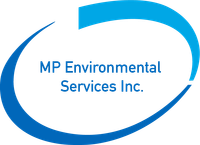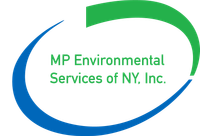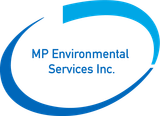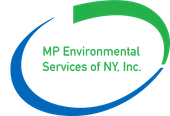Services We Offer
Asbestos Removal
MP Environmental Services of NY, Inc. is a highly effective asbestos remediation company that prides itself on our problem-solving abilities to develop the most efficient, cost-effective solution for any sized project. Through our constant blending of new innovative technology with changing regulations and industry practices, we can offer hydro-blasting to remove ACM mastic and dry-ice blasting for mold abatement. This philosophy ensures that your project will be a success.
Our services include:
- Bulk removal and encapsulation
- Emergency cleanups
- Emergency response actions
- Compliance with all state and federal asbestos regulations
The Asbestos Control Bureau (ACB) oversees the abatement of toxic hazards associated with asbestos fiber by performing inspections during the rehabilitation, reconstruction, or demolition of buildings and other structures originally constructed with asbestos or asbestos-containing materials. The ACB also responds to complaints with regards to asbestos, as well as enforcing the New York State Labor Law and Industrial Code Rule 56.
For more information, click here.
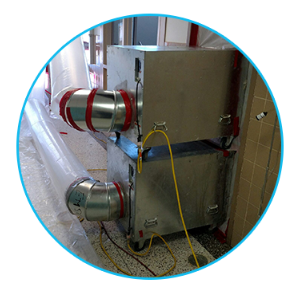
"It is now known that asbestos dust is one of the most dangerous dusts to which man is exposed."
(1932 Letter from U.S. Bureau of Mines to asbestos manufacturer Eagle-Picher)
Lead Removal

Lead based paint (LBP) in housing and commercial buildings poses a health risk to tenants, owners, and lending institutions. EPA and state regulations related to lead contamination in housing, construction, and demolition have increased the need to address the presence of LBP in buildings. Lead and other heavy metals contained in paint are toxic and could be ingested or inhaled whenever the painted surface is compromised, such as while sanding, grinding, burning, or cutting.
Materials generated in the removal processes are characterized as hazardous waste. In this case, special handling and disposal methods are necessary. Engineering controls, work practice site assessments, and personal protective equipment may be required to minimize potential negative health effects of lead exposure.
Our experience allows us to develop, implement, and manage lead abatement plans for residential, commercial, industrial, and medical operations. We've worked on everything from construction and demolition projects to single and multi-family homes.
For Lead Resources & Information, click here.
“lead in water and in the paint of older homes continues to present a significant hazard for pregnant women and young children. Lead paint poses a risk when young children eat or suck on paint chips, or when pregnant women or children breathe dust from deteriorating painted surfaces. Houses built before 1978 are especially suspect, and under a new law passed by Congress in 1992, owners of targeted housing have been required to reveal any information about known lead-based paint to potential buyers or renters”
(Lise Eliot)
Mold Removal
Microbial and fungal infestations can be very devastating to structures while also presenting lasting health effects. MP Environmental trained employees utilize a scientific approach to evaluate the source and extent of the problem derived from empirical data that will be used to track progress and demonstrate completion. MP Environmental holds a NYS Certified Remediator License.
NY State Mold Program: EEnforces Article 32 of the New York State Labor Law, setting licensing requirements and work standards for mold professionals. Components include mandatory training for contractors, licensing restrictions, and minimum work standards, such as preventing fraud, ensuring independent assessments, using EPA-compliant disinfectants, providing protective equipment, displaying project notices and licenses, and conducting post-remediation assessments.
For more information, click here.
"Environmental toxic mold exposure is a massive health crisis that very few are aware of."
(Dave Asprey)
Environmental Services
MP Environmental Services, Inc. provides comprehensive services under one roof to meet all of your demolition, environmental abatement, and remediation needs.
As your general contractor, we handle every component of your project:
- Underground and above-ground tank removal
- Concrete removal and disposal
- Interior Drying and Disaster Response
- Ferrous and nonferrous metals reclamation
- Facility decontamination
- Contaminated soil removal and disposal
- Hazardous and Non-Hazardous Bulk Soil Disposal Services
- Hazardous and Non-Hazardous Site Dewatering and Bulk Disposal
- Onsite Treatment of Water
- Hazardous and Non-Hazardous Waste Disposal Services
- US EPA Brownfield Consultation Services
"Essentially, all life depends upon the soil... There can be no life without soil and no soil without life; they have evolved together."
(Charles Kellogg)
Demolition Services
Safe & Efficient Demolition Contracting
With over twenty years of interior and structural demolition experience, MP Environmental’ s project managers and personnel will ensure that the potentially dangerous activities of demolition will be completed in a safe and professional manner. We strive to be stakeholders in our client’s projects and employ a belief that if it is worth doing, It is worth doing correctly the first time.
"I demolish my buildings behind me - then there is no choice but forward."
(Fridtjof Nansen)
PCB & Recycling Services
We recognize the value in every building component. MP Environmental Services, Inc. turnkey services include recovering value from your unused building materials. We try to recycle or reuse as much as 99% of the concrete, metal, and other materials demolished at your site as it is prepared for its future use.
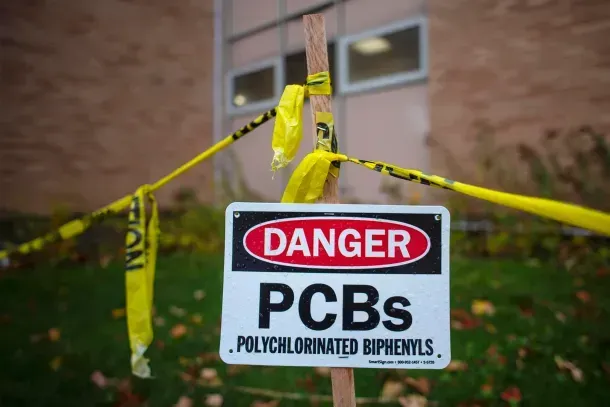
Polychlorinated Biphenyls (PCBs): Carcinogenic compounds banned in the US in 1976 and internationally in 2001. Appearance: Light yellow or colorless liquids. Chemical formula: C12H10−xClx. NFPA 704: 1 2 0. UN number: UN 2315. PCBs pose environmental and health risks, requiring remediation.
PCB Remediation Process:
• Detection and Analysis: Use chemical analysis tools to identify PCB presence and assess contamination extent.
• Risk Assessment: Prioritize by assessing the data to quantify the extent of contamination and determine areas of greatest risk.
• Cleanup Strategy: Choose from strategies like monitored natural attenuation, bioremediation, thermal desorption, or landfill.
• Implementation: Execute the chosen strategy, followed by monitoring for effectiveness.
• Ongoing Monitoring: Regular post-cleanup monitoring ensures sustained low PCB levels.
Common PCB Sources in Building Materials:
- Caulks and Sealants: Used in buildings constructed or renovated between 1950 and 1979.
- Paints and Coatings: PCBs were stabilizing additives in older paints.
- Fluorescent Light Ballasts: Capacitors in ballasts before 1979 often contained PCBs.
- Insulation Materials: Some insulation, like oil or foam, may contain PCBs.
- Electrical Equipment: Pre-1979, transformers and capacitors often used PCBs.
Handling PCB Contamination: Professional assistance in hazardous material management is crucial for proper handling and disposal to minimize environmental damage and human health risks.
"An old building is like a show. You smell the soul of a building. And the building tells you how to redo it."
(Cameron Mackintosh)
Dry Ice Cleaning
Dry ice with a temperature of -109.3°F is an exceptional media for removing a variety of contaminates without the use of water, abrasive media, or harmful solvents. This non destructive method can be used on masonry, electronics, steel, wood, and plastic. The dry-ice media sublimates into carbon dioxide leaving the cleaned area dry and ready to paint or use.
Dry Ice Blasting works by:
- Impact of soft dry ice pellets accelerated by compressed air traveling at supersonic speed and releasing the Kinetic Energy.
- Extreme cold of dry ice embrittles the contaminate which helps break the bond between the substrate and the contaminate.
- Expansion of the dry ice pellets through sublimation releases energy that further weakens the bond between the substrate and contaminate.
Dry Ice Blasting is great for:
- Grafitti removal
- Fire residue removal
- Electronic cleaning
- Asbestos tile removal
- Paint Removal
- Surface substrate areas
- Plastic Injection Mold Cleaning
- Wood cleaning
- Rust surfaces
- Iron, Steel and Part surfaces
- Restoration
- Mold and Fire Restoration


